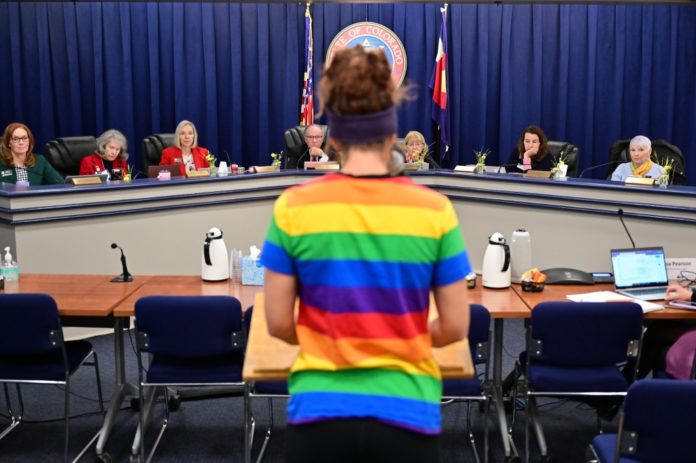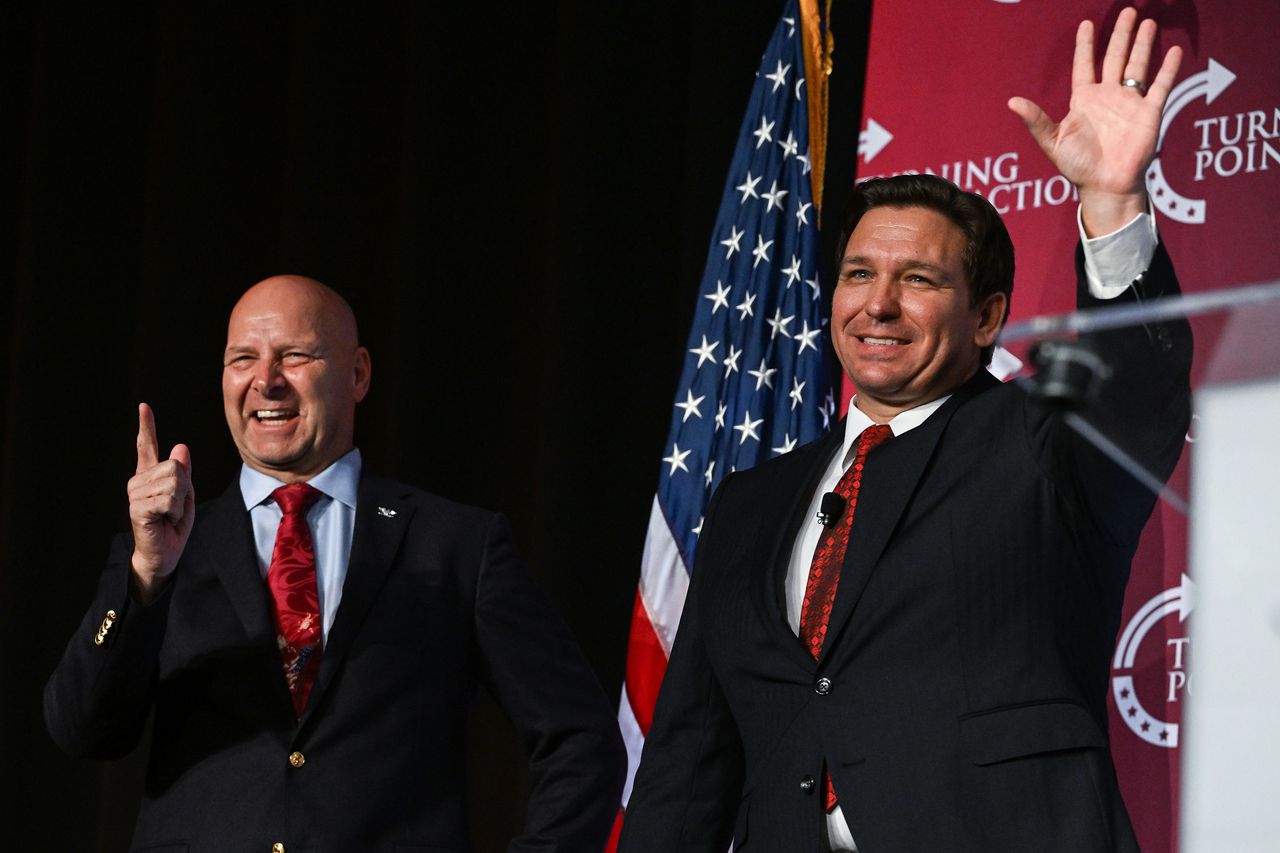
In the mid-1600s, when Virginia was still just a colony, a debate erupted among residents in a small English settlement: Was a servant in the home of John and Jane Tyos a man or a woman?
The servant was raised as a girl named Thomasine Hall in 17th-century England, learning to sew and make lace. Hall grew older and followed an elder brother into military service, donning men’s clothing and hairstyles. But Hall reverted to wearing women’s clothing and made a living through needlework after serving in the military.
Then when Hall set sail for Virginia in 1627, it was with a new name: Thomas.
The case of Thomasine/Thomas Hall — which ended up going before the Virginia General Court of Jamestown in 1629 — is one of the lessons eighth- or ninth-grade students learn about in schools that teach LGBTQ-inclusive curriculums developed by a Massachusetts-based nonprofit organization named History UnErased.
“People who are LGBTQ-identifying are woven into the fabric of what students are already learning anyway,” said Debra Fowler, co-founder and executive director of the organization. “They’ve always been there.”
History UnErased’s curriculum is an example of the lessons Colorado schools could choose to teach to comply with a 2019 state law requiring public schools to teach the historical contributions of lesbian, gay, bisexual and transgender people in history classes.
The bill created the 1192 Commission, which used History UnErased as one of its resources when it made recommendations to the committee revising the state’s social studies standards on how to meet the requirements of the 2019 law.
The Denver Post reviewed History UnErased’s curriculum — which is not yet used in Colorado schools — to understand what students could learn when they are taught the experiences of people in the LGBTQ community.
Colorado has been revising its social studies standards since last year, and, in doing so, the state has become embroiled in the national debate over how and when schools should teach about gender identity, sexual orientation, race and racism.
Initially, directives to include the perspectives of people in the LGBTQ community were added to the proposed revisions to the state’s social studies standards.
But in recent months, many of those LGBTQ references, along with mentions of people of color, were removed after members of the public and at least one member of the state Board of Education questioned the “age appropriateness” of including their experiences in history lessons. (The social studies standards do not instruct educators to teach sex education, which is optional in Colorado.)
The references removed from the revised standards were oftentimes lists of minority groups whose perspectives students could learn about; for the most part, they did not say what specific lessons or subjects should be taught in the classroom.
In Colorado, local school boards and educators decide what is ultimately taught in classrooms. The state’s standards give teachers a framework they can use to create their history and civics curriculum.
While educators can teach beyond what is laid out in the standards, there are those who will limit lessons to only what is mentioned in the framework, said Darlene Sampson, an equity specialist principal analyst with the Western Educational Equity Assistance Center at Metropolitan State University of Denver
“The standards do anchor the curriculum and even the instructional practices,” she said. “If you are backing away from or pushing away the history, the words, the ways we describe authentic history, teachers become afraid and have anxiety about, ‘What can I say and what can I not say?’”
A group of lawmakers has pushed back on the removal of the language, saying that not including the experiences of people of color and those in the LGBTQ community “boldly thwarts the legislative intent” of the 2019 law.
The Colorado State Board of Education is expected to vote by December on final changes to the standards.
As this debate continues, here’s a look at what history lessons provided by History UnErased look like:
The case of Thomasine/Thomas Hall
Before students read about Thomasine/Thomas Hall, they are asked why determining Hall’s gender identity was important to residents of the settlement? The case is part of a more overarching lesson on how gender roles and gender identity influenced social structures and labor systems in Colonial Virginia.
Hall’s gender identity was questioned about a year after Hall arrived in Virginia and a resident said Hall was both a man and a woman. The Tyos family was in the process of selling Hall to a resident named John Atkins, who “likely wanted to know Hall’s gender to determine the proper labor assignment,” according to the worksheet given to students.
Hall refused to choose a gender, which spurred a physical exam by three women in the community who were known to inspect others for signs of out-of-wedlock pregnancy and witchcraft. The women declared Hall a man.
“Tyos, however, insisted that Hall was a woman, most likely based on Hall’s needlecraft skills and dress,” according to the worksheet, which noted that Hall sometimes wore dresses after arriving in Virginia.
Eventually, the court ruled that Hall was both a man and a woman and ordered Hall to wear men’s clothing with an apron and a linen cap. This likely means that Hall could not have an intimate relationship with others, according to History UnErased.
The story of a Union soldier named Lyons Wakeman
When it comes to elementary students, History UnErased adjusts the language it uses to words that are familiar to the age group. For example, it doesn’t use the word “queer” in history lessons for K-3 students but instead uses the word “gay,” Fowler said.
“The language is what gets people so hung up,” Fowler said.
One of History UnErased’s units for third-graders is about Sarah Wakeman. During the Civil War, Wakeman joined the Union Army under the name Lyons Wakeman. As a soldier, Wakeman earned $13 a month and sent letters home from the battlefields in Virginia and Louisana.
Before students read about Wakeman they are asked two questions: “Today there are many women soldiers. Was that always true?” and, “Were women allowed to be soldiers during the Civil War?”
The lesson doesn’t use pronouns for Wakeman because “we don’t know how Sarah would have identified today,” Fowler said.
“Nowhere in this unit is there LGBTQ language or telling students how these people would have identified,” Fowler said, adding that ideas about gender identity were different centuries ago.
Instead, the lesson uses Wakeman’s story to teach about economics and what jobs were available for women during the Civil War.
“We’re not siloing LGBTQ content, we’re weaving it into what’s already being taught,” Fowler said.
Astronauts, civil rights activists and more
Another lesson for elementary students is about people who have received the Presidential Medal of Freedom. Students learn that U.S. presidents select who receives the medals and that there’s a special ceremony at the White House, according to the lesson plan.
This lesson does not explicitly identify people as being part of the LGBTQ community, but rather uses terms like “life partner” in reference to a person’s significant other.
“It’s gentle, it’s casual,” Fowler said of the language used.
For example, students learn that among those to receive the medal in 2013 was Sally Ride, who made history as the first American woman to travel to space. Students are taught that Ride loved science as a child and after her career as an astronaut ended she helped young people, especially girls, enter fields such as math, science and engineering.
“She also wrote many children’s books about science and space exploration with Tam O’Shaughnessy, her life partner of 27 years,” according to the lesson materials students receive.
Students don’t only learn about recipients who are part of the LGBTQ community. They are taught about a wide range of people, including former U.S. Rep. John Lewis, a civil rights activist; tennis player Billie Jean King; and Patsy Mink, the first woman of color and first Asian American woman elected to Congress.
“These are all people who worked for equality and equal rights,” Fowler said, adding that recipients of the award reflect a composite of American people who come from diverse backgrounds. The reason for this is so that students — whether they have two dads or are young girls fascinated with space — can see themselves reflected in the history they are learning, she said.
“It’s an opportunity for all students to feel included,” Fowler said.
The lesson also asks students to consider why a person may not have been included in history books before now.
Bayard Rustin is another person who received the Presidential Medal of Freedom in 2013. Rustin organized the March on Washington for Jobs and Freedom, when “hundreds of thousands of people gathered in Washington, D.C., to protest society’s unequal treatment of African Americans” — and Martin Luther King Jr. gave his “I Have a Dream” speech.
“His work on behalf of African Americans led to the passage of the Civil Rights Act of 1964, a law that banned segregation in public places,” according to History UnErased’s lesson materials. “Although the march was a success, Bayard was often left out of the history books. Until now!”
Students learn that Rustin received the medal 26 years after he died and that it was given to his life partner, Walter Naegle.
“Why do you think Bayard was left out of history books?” students are asked.








